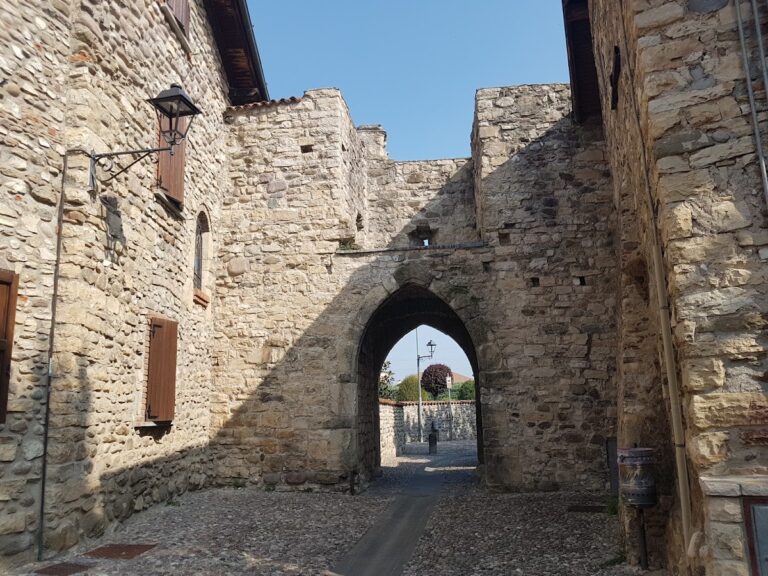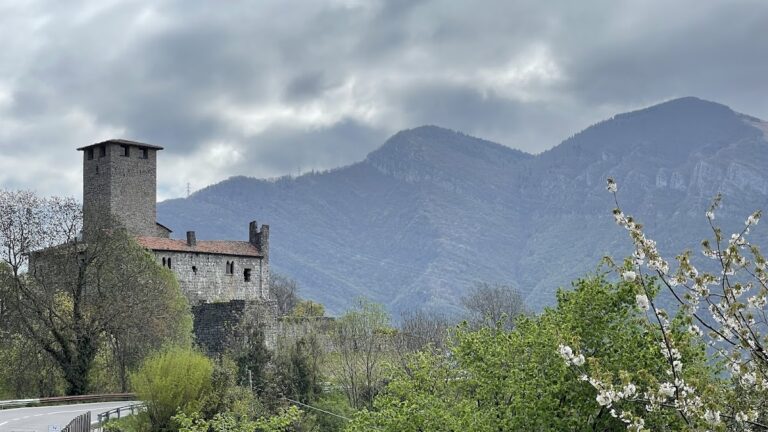Castello di Calepio: A Historic Fortress and Noble Residence in Italy
Visitor Information
Google Rating: 4.4
Popularity: Low
Google Maps: View on Google Maps
Official Website: www.fondazioneconticalepio.it
Country: Italy
Civilization: Unclassified
Remains: Military
History
The Castello di Calepio is located in the municipality of Castelli Calepio, Italy. This fortress was originally built by the local nobility and has roots extending back to the medieval period. Its history reflects the shifting political and military struggles of northern Italy in the 15th century and beyond.
An earlier fortification once stood here during the time of Berengario del Friuli, but it was destroyed in 1428 by the condottiero Niccolò Piccinino amid the ongoing wars between Milan and Venice. The site was damaged further in 1437 during the same conflict. Following these events, the Martinengo family, who owned the original fortress and surrounding lands, supported the Republic of Venice. After Venice’s victory, the family received permission and funds to rebuild the castle in 1430. They were also granted feudal rights over the Val Calepio area, adopting the noble title Counts of Calepio. Count Trussardo, the first head of this branch, began construction of the new castle, primarily as a defensive stronghold.
Over the centuries, the castle evolved from a military fort to an elegant noble residence. Significant enlargement and redecoration occurred during the 17th and 18th centuries under Count Orazio da Calepio. These changes added multiple rooms and elaborate gardens, reflecting changing tastes and the lessened need for strict defense. In the late 1600s, a chapel dedicated to the Guardian Angel and Saint Celestine Martyr was erected within the castle grounds, housing relics brought from Roman catacombs.
The castle’s ownership remained with the Calepio family until 1842, when, following the death of the last family member, it was donated to the Ente Ospizio Calepio. This institution provided care for impoverished local girls. Over the 20th century, the organization shifted towards preserving the castle itself and promoting cultural activities. One such initiative highlights Ambrogio Calepio, son of the original castellan and author of the Calepino, recognized as the first Latin dictionary.
Remains
The Castello di Calepio stands on a vantage point overlooking the Oglio river valley, using natural features for defense. To the south, a steep escarpment shields the site, while Cimavalle offers protection on the west side. Deep moats guard the northern and eastern boundaries. The entire enclosure is secured by a stone wall constructed from small stones, originally topped with Guelph battlements—a simple straight crenellation—which were later replaced or augmented by more decorative swallowtail merlons, typical of residential castles.
Along the northern wall, there are two towers: a smaller one and a notably larger square tower, both predating the 1430 reconstruction. These were incorporated into the new castle’s layout. The primary entrance is located beside the large square tower and was accessed by a drawbridge crossing the moat. Near this entrance stands another tower, originally outside the walls and built before 1430. This tower suffered partial destruction during early 15th-century conflicts but was later transformed into a chapel dedicated to Saint Maurice in the 17th century, integrating it into the castle complex.
In the early 1600s, extensive structural work expanded the castle’s walls and added a new residential wing on the northeast side. This wing features richly decorated interiors, including frescoes painted by Luigi Deleidi, known as il Nebbia, and walls adorned with French tapestries. A columned portico also forms part of this residential addition, highlighting its shift from fortification to noble dwelling.
On the southeast side, the structure was reinforced with buttresses and developed into two large gardens designed in the Italian style. Between the drawbridge and the main gate, a chapel built between 1693 and 1695 now houses relics of Saint Celestine Martyr, recently discovered in Roman catacombs and previously kept at the nearby Castello di Trebecco.
Inside, the castle boasts high-quality Rococo and Neoclassical decorations from the 18th and 19th centuries. These include stucco work attributed to Muzio Camuzio and frescoes by Carlo Innocenzo Carloni. A late 15th-century loggia overlooks the central courtyard, where a prominent statue commemorates the founder, Trussardo da Calepio.










